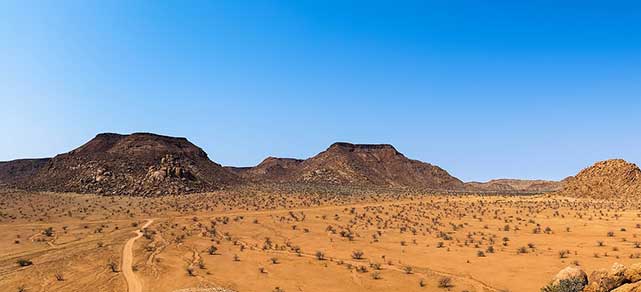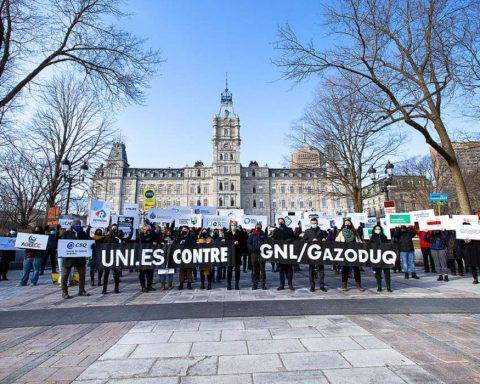One fear of climate change is that more variable weather conditions will lead to violence and chaos in some places. But looking at it methodically, do erratic weather conditions actually lead to violent conflict and political instability? Not necessarily.
In a forthcoming contribution in the Journal of Peace Research, I find that the emergence of violent conflict in connection with adverse weather events, such as droughts, in sub-Saharan Africa is very much dependent on the infrastructure of affected areas.
In African regions with a comparably dense road network and good access to ground water reserves, rural communities cope more easily with drought and are thus less likely to join prospective rebel armies or clash over access to water and arable land when these become scarce.
In remote and structurally neglected regions, the situation is different. In these settings, droughts are likely to compromise the livelihoods of vulnerable communities and thus exacerbate both anti-state grievances and local resource conflicts.
Circumstances matter
Recent years have seen a surge in the number of studies on possible links between climate variability and armed conflict. As sudden changes in temperature and precipitation are expected to become more frequent in certain areas, researchers and practitioners alike have become increasingly worried about the security implications of extreme events such as droughts.
While there is no conclusive evidence for a systematic connection between climatic shocks and conflict risk, there is nevertheless a growing consensus among experts that adverse weather events can, under certain conditions, contribute to the emergence of violent conflicts.
One of these conditions, I argue, is the failure of certain governments to provide their constituents with adequate protection against unforeseen environmental shocks by allocating essential public goods to climate-sensitive areas. This becomes evident when looking at the spatial allocation of road and water infrastructure across sub-Saharan countries and how it has affected the observed relationship between droughts and armed conflicts over the last 20 years.
Comparing more than 860 administrative regions (i.e., provinces, regional states) in 42 sub-Saharan countries over the period 1990-2010, I find that regions with comparably well-developed road and water infrastructures have a much lower risk of experiencing violent conflicts following a drought than less well-endowed regions.
Public goods and public trust
This result can be explained in a number of ways. Road and water infrastructure play key roles in helping rural communities cope with extremely dry conditions. Roads facilitate access to markets and towns, where rural dwellers can diversify their livelihoods, and allow relief agencies to quickly access drought-stricken populations. Pipes and deep boreholes, on the other hand, provide farmers and herders with water when shallow wells and surface sources dry up.
At the same time, water and in particular road infrastructures also represent a significant investment, acting as an indicator of the importance given to a particular region by the government, international donors, and the private sector. Poorly developed roads and water delivery systems are thus not only a factor of vulnerability, but are often also perceived as a sign of pervasive government neglect – a perception which is likely to be strengthened in times of severe climatic stress.
Loss of livelihoods and widespread discontent with public authorities among drought-affected communities can in turn be exploited by rebels and extremist groups that offer promises of political change and pecuniary rewards to their followers.
Similarly, the weak presence of public services and infrastructures can incite violent self-help strategies and exacerbate local land and water conflicts when the availability of these resources is drastically reduced.
Accounting for politics
Two important implications can be derived from these results.
First, climate-conflict connections in sub-Saharan countries are more complex than often assumed in sensationalist claims about looming “climate wars.” Different African countries, as well as different regions within these countries show quite different levels of conflict risk in connection with adverse weather events. This is as much a consequence of historical legacies and deliberate budget allocation decisions as it is linked to the vagaries of a changing climate and the continent’s geographic vulnerability.
Second, the finding that better infrastructure reduces the risk of armed conflict in connection with extreme weather events suggests that development efforts in Africa’s drought-prone areas could yield important benefits in terms of security.
Yet, building new roads and drilling new boreholes in politically volatile regions might come with their own challenges. For instance, road construction in conflict-ridden areas with weakened institutions can facilitate land grabbing by powerful individuals, exacerbate local grievances, and open up avenues for armed groups to extort money from construction companies. Similarly, disputes can emerge between pastoralists when new boreholes allow access to new grazing areas for which there are no established use rights.
To avoid these difficulties and provide effective aid in conflict prevention, infrastructure development thus needs to be particularly sensitive to the social and institutional setting in which it is taking place.
Adrien Detges is a research analyst at adelphi, a Berlin-based think tank on climate, environment and development. He also conducts research on climate and security at the Freie Universität Berlin. This article was originally published by The New Security Beat.







